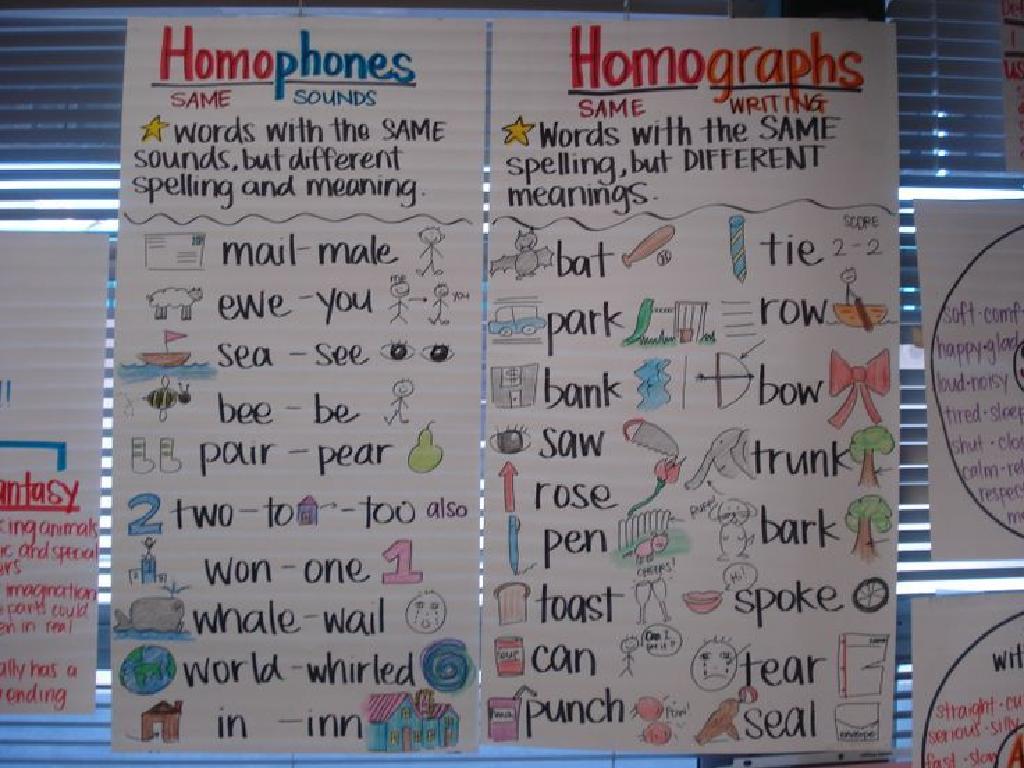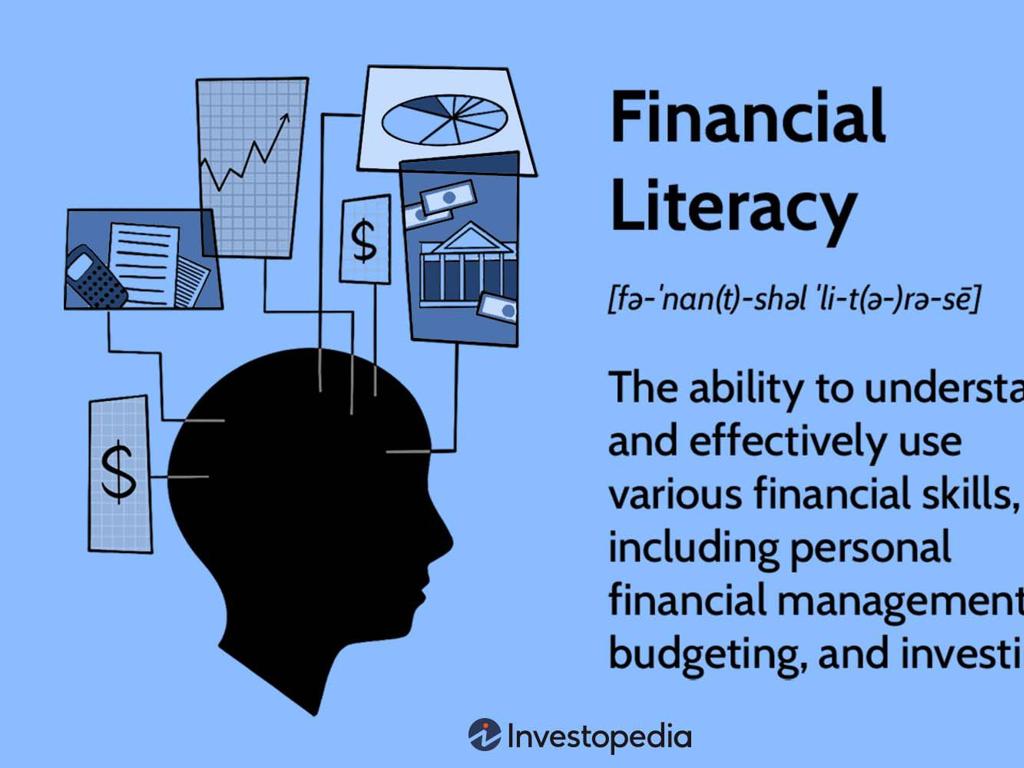What Is True About The Given Pattern?
Subject: Math
Grade: Fourth grade
Topic: Patterns And Sequences
Please LOG IN to download the presentation. Access is available to registered users only.
View More Content
Exploring Patterns and Sequences
– Discover the world of patterns
– Predicting the next in a sequence
– Use patterns to guess the next number or shape
– Identifying different patterns
– Find patterns in numbers, shapes, or colors
– Describing patterns clearly
– Use words to explain the rules of the pattern
|
In today’s lesson, we will dive into the fascinating world of patterns and sequences, which are fundamental concepts in mathematics. Understanding patterns is crucial as it helps us to predict and anticipate future events based on observed regularities. We’ll practice identifying various types of patterns, whether they’re in numbers, shapes, or colors, and learn how to describe them using mathematical language. By the end of the lesson, students should be able to recognize a pattern and articulate the rule that governs it, preparing them for more complex mathematical concepts. Encourage students to think about patterns they encounter in their daily lives to make the lesson more relatable and engaging.
Exploring Patterns
– Definition of a pattern
– A pattern is a repeated, orderly sequence following a rule
– Patterns in various forms
– Can be colors, shapes, or sizes in a sequence
– Patterns in the world around us
– Nature’s patterns: spider webs; Art: wallpaper designs; Music: rhythms
– Recognizing patterns in numbers
– Like counting by 2s: 2, 4, 6, 8
|
This slide introduces the concept of patterns to fourth-grade students, emphasizing their presence in everyday life and their various forms. A pattern is defined as a sequence that follows a specific rule, which can be applied to different elements such as numbers, objects, and actions. Students should understand that patterns are not just limited to mathematics but can also be observed in nature, art, and music. Encourage students to think of examples from their daily experiences. The slide also aims to prepare students for recognizing numerical patterns, a fundamental skill in understanding sequences in math.
Exploring Types of Patterns
– Understanding repeating patterns
– A sequence that cycles the same numbers or shapes
– Recognizing growing patterns
– Each sequence grows by adding elements
– Examples of pattern types
– We’ll review examples to identify these patterns
|
This slide introduces students to the concept of patterns in sequences, focusing on repeating and growing patterns. Repeating patterns are those in which the sequence of numbers, shapes, or colors is repeated over and over again. Growing patterns, on the other hand, involve a sequence that increases or decreases by a certain amount each time. Use visual aids and tangible examples to help students identify and understand these patterns. Encourage them to think of patterns they encounter in their daily lives, such as the days of the week or the arrangement of tiles on a floor. During the class, work through several examples together, asking students to describe the patterns they see and to predict what comes next in a sequence.
Exploring Patterns and Sequences
– How to spot a pattern
– Look for repeating sequences or increasing/decreasing changes.
– Discover the pattern’s rule
– The rule is what happens from one element to the next.
– Predict the next element
– Use the rule to guess what comes after the last element shown.
– Practice with examples
– We’ll try this with several patterns to get the hang of it.
|
This slide is aimed at helping students understand the concept of patterns in sequences. Start by explaining that a pattern is something that repeats or changes in a predictable way. Encourage students to observe carefully and look for repetitions or growth. Discuss how to determine the rule of a pattern, which is the step that’s repeated to create the sequence. Practice this skill by looking at different examples and predicting what comes next. Provide a variety of patterns, such as numbers, shapes, or colors, and guide the students through the process of identifying the rule and using it to predict subsequent elements. This will help them develop critical thinking and problem-solving skills.
Creating Our Own Patterns
– Time to make your own pattern!
– First, think of a rule for your pattern
– A rule could be ‘add 2’ or ‘alternate colors’
– Share your pattern with a friend
– Explain the rule of your pattern
– Tell your friend how you made your pattern
|
This slide is designed to engage students in an interactive activity where they apply their understanding of patterns by creating their own. Encourage students to think creatively and decide on a rule for their pattern, such as adding a certain number, skipping counts, or alternating shapes or colors. Once they have created their pattern, they should pair up with a classmate to share and discuss their patterns. This peer interaction will help reinforce their understanding of patterns and allow them to practice explaining mathematical concepts. As a teacher, circulate the room to facilitate discussions, provide guidance, and ensure that each student can articulate the rule behind their pattern. Offer praise and constructive feedback to foster a positive learning environment.
Exploring Math Patterns
– Math patterns aid problem-solving
– Patterns link to basic operations
– Patterns show how numbers are added, subtracted, multiplied, or divided
– Discovering rules in patterns
– We’ll look at examples and determine the pattern’s rule
– Practice with different sequences
– Let’s apply the rules to new sequences for practice
|
This slide introduces students to the concept of patterns in mathematics and their connection to basic arithmetic operations. Emphasize that recognizing patterns is a skill that can simplify complex problems. Explain that patterns are everywhere in math, and they help us predict and understand the world better. Use examples like counting by 2s or the pattern in times tables to illustrate how patterns relate to addition, subtraction, multiplication, and division. Encourage students to actively participate by identifying the rules that govern given patterns and applying these rules to new sequences during practice activities. This will help solidify their understanding and prepare them for more advanced math concepts.
Discovering the Rule of a Pattern
– Observe changes in the pattern
– Look at how the numbers or items change from one to the next
– Adding or subtracting consistently
– Check if a number is added or taken away each step
– Multiplying or dividing consistently
– See if each step involves multiplication or division
– Determine the pattern’s rule
|
When teaching students to discover the rule of a pattern, start by observing the changes between consecutive elements in the pattern. Demonstrate with examples how a consistent addition or subtraction can form a pattern, such as adding 2 to get from 2, 4, 6, 8, etc. Similarly, show how multiplication or division can create a pattern, like multiplying by 3 for 3, 9, 27, etc. Encourage students to practice with different patterns and to articulate the rule they find. This will help them understand sequences and develop their problem-solving skills. For the activity, provide various patterns for students to analyze and determine the rules that apply.
Class Activity: Pattern Detectives
– Become a pattern detective
– Solve the pattern mysteries
– Find the missing parts in a sequence
– Work in pairs on pattern rules
– Discuss and agree on the patterns’ rules
– Share your findings with the class
|
In this engaging class activity, students will pair up to investigate incomplete patterns and determine the underlying rules to solve them. Provide a variety of sequences with different complexity levels, such as numerical patterns, shape patterns, or color patterns, to cater to all skill levels. Encourage students to look for repetitions, additions, subtractions, or other operations that might be at play. After the activity, have each pair present their findings and explain how they figured out the rules. This will foster communication skills and deepen their understanding of patterns and sequences. Possible activities could include finding the next shape in a pattern, determining the next number in a sequence, or predicting future events in a story based on the pattern of events.
Review and Share: Patterns Everywhere!
– Review our patterns lesson
– Explain your pattern’s rule
– Share the sequence and the rule you found, like adding 2 each time
– Discuss patterns in daily life
– Patterns are not just in numbers, they’re in nature, art, and music too!
– Understand patterns in math
– Recognizing patterns helps solve problems and see relationships in numbers
|
This slide is meant to recap our lesson on patterns and sequences. Encourage students to think about the patterns they’ve worked with and articulate the rules that govern them. This could be a numerical pattern where they add or subtract a consistent number to get to the next term, or a shape pattern where they identify a repeating sequence. Highlight the importance of patterns in everyday life, such as in the rhythm of music, the arrangement of tiles, or the cycles of the seasons. Emphasize how understanding patterns is a key skill in mathematics that helps with predicting outcomes and solving complex problems. During the class discussion, allow students to share their examples and explain the rules they’ve discovered, fostering a collaborative learning environment.
Pattern Masters: Homework Challenge
– Congratulations, pattern experts!
– Complete the pattern worksheet
– Find and extend patterns on the sheet
– Practice is key to mastery
– The more you practice, the better you’ll get!
– Bring questions to next class
– We’ll review any difficulties together
|
This slide wraps up the lesson on patterns and sequences, congratulating the students on their hard work and setting them up with a practice worksheet to reinforce their learning at home. Emphasize the importance of practice in mastering the concept of patterns. Encourage students to attempt all the problems and remind them that it’s okay to find some patterns challenging. Let them know that they can bring up any questions or difficulties in the next class, where there will be a review and further discussion. This approach aims to build their confidence and ensure they understand that learning is a process that involves tackling and overcoming challenges.






